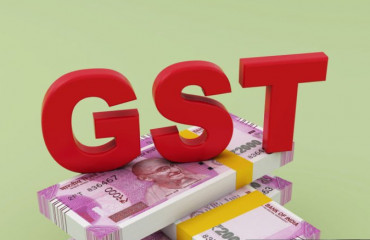
Data from GSTN, the company that processes GST returns, suggested that India’s factory output is holding up despite the uncertainty around exports in the wake of US tariffs.
New Delhi: Electronic permits raised by businesses and traders for shipping goods within and across states shot up to 122.7 million in May, second only to the record 124.5 million raised in March, suggesting brisk economic activity in the second month of the current fiscal year.
Data from GSTN, the company that processes GST returns, showed that e-way bill generation, which saw a small drop in April, rose nearly 3% month-on-month and 19% year-on-year in May.
The data also suggested that despite the uncertainty around exports in the wake of a 10% universal baseline import tariff imposed by the US – India's largest export market – factory output is holding up.
The 10% tariff came into effect on 5 April, but the higher country-specific tariff of 26% on India has been suspended during the ongoing trade talks.
Other indicators point to a revival
S&P Global said on 2 June that the HSBC India manufacturing purchasing managers index (PMI) stood at 57.6 in May, indicating an improvement in business conditions across India's manufacturing industry, although it was the weakest improvement in operating conditions since February.
The PMI, based on a survey of 400 panellists from different manufacturing industries, was at 58.2 in April. A reading above 50 indicates expansion from the previous month and below that, a contraction.
The Federation of Automobile Dealers' Association had last week reported a "modest 5%" annual increase in automobile sales in May, led by two- and three-wheelers and tractors, while passenger vehicles, construction equipment and commercial vehicles witnessed a contraction.
The association said India's economic foundations remained robust, and that renewed rural liquidity and stronger farm incomes should bolster semi-urban and hinterland demand for two-wheelers and tractors, though global supply-chain headwinds ranging from rare-earth constraints in electric vehicle components to ongoing geopolitical tensions may keep urban consumer sentiment in check.
What drove the May surge?
The surge in e-way bill generation in May, the second-highest on record, reflected more than just a recovery from the April dip, said Rajat Mohan, senior partner at AMRG & Associates. He said it signalled strong underlying economic activity supported by seasonal, policy and compliance factors.
"A likely driver was anticipation around a GST Council meeting, prompting businesses to advance dispatches. Additionally, with a year having passed since the 2024 general elections, infrastructure and public sector projects likely resumed at scale, boosting goods movement. Production-linked incentive scheme expansions and pre-Kharif agricultural demand may have further contributed to intra- and inter-state logistics activity. Meanwhile, increased compliance—possibly due to anti-evasion drives—also led to higher e-way bill filings," he added.
Overall, May reflected a robust and formalising supply-chain ecosystem, supported by both economic recovery and administrative vigilance, he said.
While announcing a 50 basis points repo rate cut, the RBI said on Friday that private consumption, the mainstay of aggregate demand, remained healthy, with a gradual rise in discretionary spending. Rural demand remained steady, while urban demand was improving and investment activity was seeing a revival, the central bank said while forecasting a 6.5% economic growth for FY26, with risks evenly balanced.
